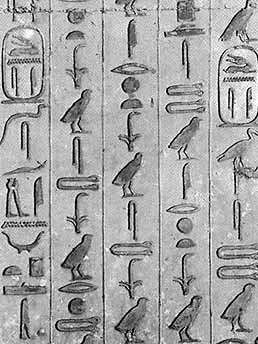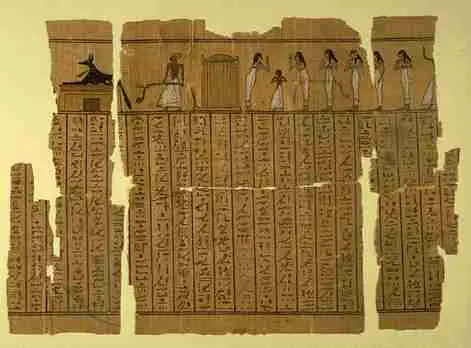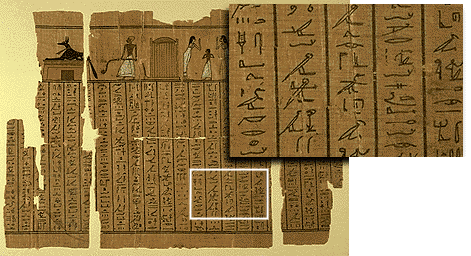Ancient Egypt was the source of great works written on papyrus or on the walls of temples, tombs, pyramids, obelisks, portraits, and monuments. These works of art succeeded for many centuries.
 Over time many changes took place; many governments and civilizations, vanished and others appeared, but the ideals of the ancient Egyptian literature persisted even in our age. Literary works occupied a distinguished position in the ancient Egyptian thought and civilization. The ancient Egyptians viewed literature as a source of spiritual nourishment and a unique way to elevate the style of expression.
Over time many changes took place; many governments and civilizations, vanished and others appeared, but the ideals of the ancient Egyptian literature persisted even in our age. Literary works occupied a distinguished position in the ancient Egyptian thought and civilization. The ancient Egyptians viewed literature as a source of spiritual nourishment and a unique way to elevate the style of expression.
The civilization of Ancient Egypt lasted longer than the entire span of what we have come to accept as ‘recorded history’: over three thousand years. During this millennia, the Egyptians developed a multitude of gods and goddesses, as well as esoteric practices that we are still unraveling the meaning of. Besides this, Egypt was the source of the first true monotheistic religion, under the pharaoh Akhenaton. This rich tradition was unknown until the early nineteenth century when the Egyptian language was finally deciphered.
The religious literature of ancient Egypt includes hymns to the gods, mythological and magical texts, and an extensive collection of mortuary texts.
The range of secular literature includes stories; instructive literature, known as wisdom texts; poems; biographical and historical texts; and scientific treatises, including mathematical and medical texts. Notable also are the many legal, administrative, and economic texts and private documents such as letters, although not actually literature.
Pyramid Texts
 The Pyramid Texts is a famous book on ancient Egypt and is about funerary inscriptions from the early pyramids. One well-known story whose earliest version comes from ancient Egypt is the story of Cinderella. This copy contains a detailed description of the humiliation and torture inflicted on Cinderella by her step-mother.
The Pyramid Texts is a famous book on ancient Egypt and is about funerary inscriptions from the early pyramids. One well-known story whose earliest version comes from ancient Egypt is the story of Cinderella. This copy contains a detailed description of the humiliation and torture inflicted on Cinderella by her step-mother.
About Egyptian Books
The Book of the Dead is the modern name of an ancient Egyptian funerary text, used from the beginning of the New Kingdom (around 1550 BC) to around 50 BC. The original Egyptian name for the text, transliterated rw nw prt m hrw is translated as “Book of Coming Forth by Day”.
The ancient Egyptians excelled in novel writing (Egyptian Books). This is reflected in the great number of stories left behind. In some of these stories, a well-traveled hero tells us about his adventures such as the story of the drowned sailor and the dangers he witnessed on the mythical island of snakes.
Another example is “Snohi”; story that became very famous for many centuries. It describes Snohi’s escape from Egypt, his stay in Syria for dozens of years, where he won the favor of the king.

